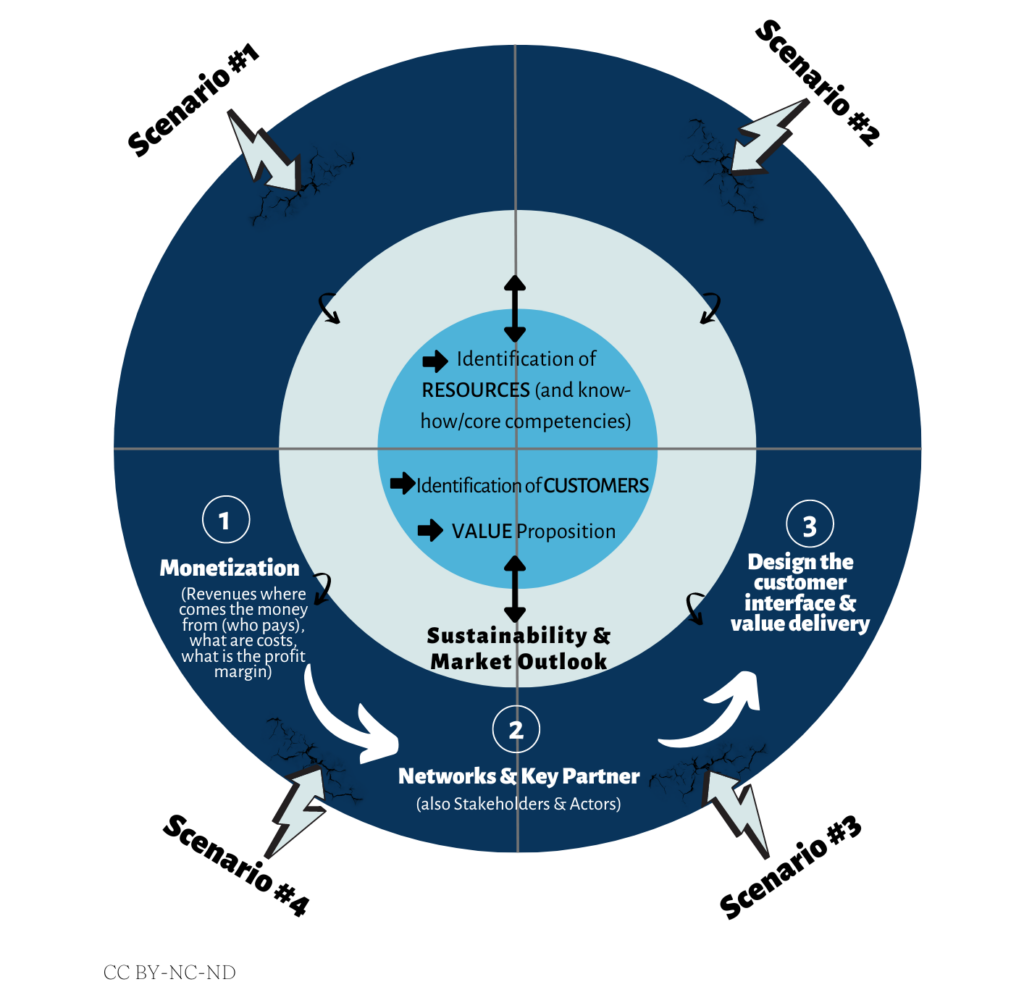Business models need to take into consideration the market and the other external factors it will face now and in the future. By looking from the outside, a business can develop dynamic capabilities and resilience.
In the following video (duration 6:20 minutes) as well as from the text on this page you will learn about The Motion Model for Sustainable Business (MMSB).
The Motion Model for Sustainable Business (MMSB) starts at the core of an organization from the point of view of the key resources for delivering the value proposition (such as know-how, financial resources, employees or human resources, natural and physical resources). It also considers the customers of the business (customer segments, geographic and demographic aspects, the buying power, and behavior of the segments, and potential customers). The value proposition deals with the questions of how resources and competences are used to deliver value, how customer needs and wants are met through the value proposition, and what the aims and values of the organization are.

In addition to internal context, we must look at the market outlook. This includes industry analysis, market analysis, competition analysis, the customer interface and value delivery. The following questions might appear when defining the market outlook: how large is the market, is it growing? How is it segmented and where does the business fit? Who are the key players in the marketplace? What are the pull factors and the main attractions? What is the brand and image of the destination? Is there a gap in supply in the microenvironment? Or who are the competitors and how do they compare?
When analyzing the business model further, monetization, networks, and key partners as well as the customer interface come next. Monetization refers to the topics of main revenue streams and costs, pricing strategy, and how profits are generated.
It is also necessary to define networks and Key Partners that are needed to deliver the value proposition. The main actors include non-governmental and destination marketing organizations.
To finalize the business model, customer interface is demonstrated. It includes, for example, how and where stakeholders interact with the organization, and what kind of interactions they are. On the other hand, there are questions to be considered such as what the main sales channels are, or what type of marketing is used. Customer interface might create or deepen the relationship with customers. It is valuable to understand the link between customer interface matching the value proposition.
Previous topics have compiled the full MMSB model. Once you understand the current business model, you can start to plan for the future. Scenario building is presented in another video of this series (FT6 Scenario building basics).
Futures orientation can use the model to see how to prepare the business for the possible futures as well as to take steps to be more prepared. You can ask questions such as:
- what the innovation needs of the business are
- how resilience can be built
- what actions should be taken, and
- what opportunities could be found.
Over the series of MOTION videos, it is presented how the MOTION Model for Sustainable Business helps your business to innovate and become future ready.
You will find the tempate of the Motion Model for Sustainable Business (MMSB) in Extra materials.